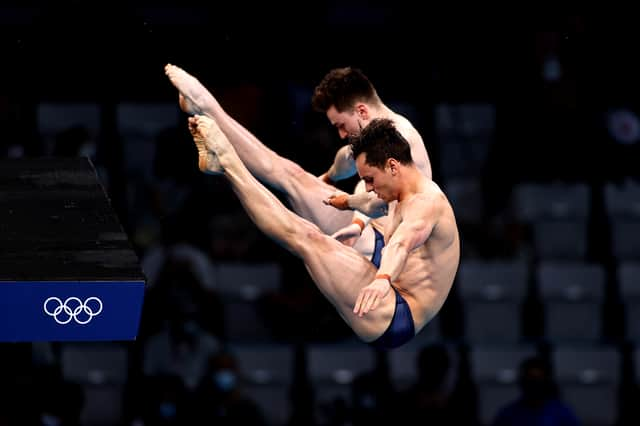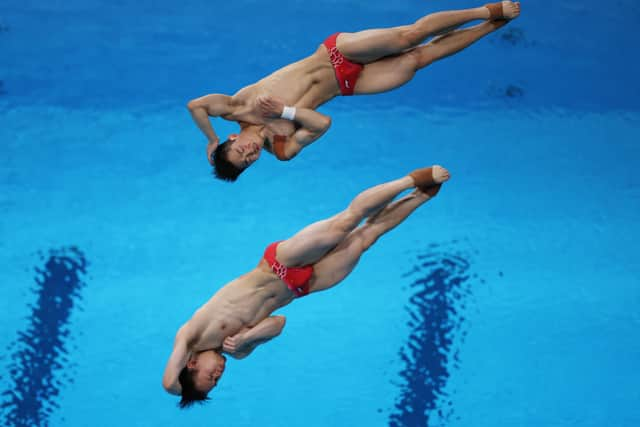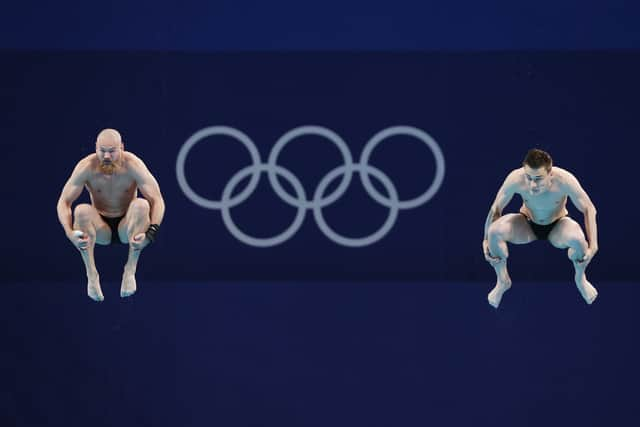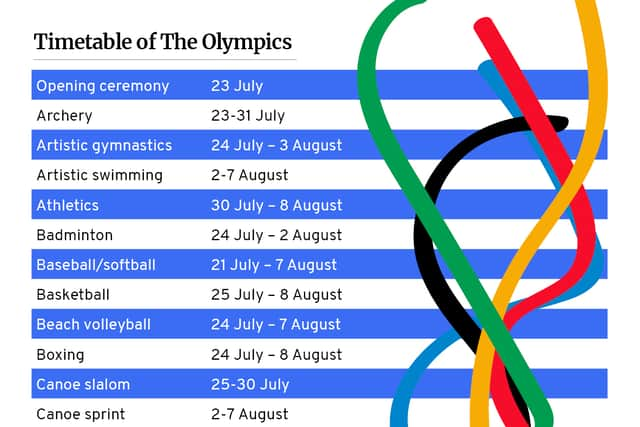Why do Olympic divers shower after each dive? Ritual explained, and how diving is scored in Tokyo Games 2021
This article contains affiliate links. We may earn a small commission on items purchased through this article, but that does not affect our editorial judgement.


As we near the end of the Tokyo Olympics many viewers have been drawn towards sports that they would not typically find themselves watching during the last two weeks.
With noteworthy performances from Chinese 14-year-old Quan Hongchan, Canadian Pamela Ware and Team GB’s Tom Daley and Matty Lee, many are keen to find out more about Olympic Diving.
Advertisement
Hide AdAdvertisement
Hide AdHow does the scoring system work? When does the Men’s 10m Platform Event Finals take place? And why do the athletes take showers every single time they come out of the water?
What are the different Olympic diving events?
In the Olympic Games, male and female athletes dive from two different heights: the three metre springboard and the 10 metre platform. The springboards used in the Olympics are constructed out of aircraft grade aluminium which gives the divers maximum bounce.
However, the higher 10m platform used in the games is a completely solid structure and the athletes must rely solely on their own legs to get lift when beginning their dive.
Despite male and female athletes competing at only two different heights, there are actually four different disciplines in Olympic Diving.
Advertisement
Hide AdAdvertisement
Hide AdIn addition to the individual events, synchronised dives also take place from the three metre springboard and the 10 metre platform. Synchronised diving involves two athletes who aim to follow an identical routine as they plunge into the water.


How does the scoring system work?
For individual events during Olympic diving, athletes are scored on the somersaults and rotations they do in the air as well as the amount of splash they generate upon entering the water.
Over the course of an Olympic final women complete five dives whereas men complete six for individual and synchronised events from both the three metre springboard and the 10 metre platform.
The judges’ overall scores for each athlete at the end of the final dictates who grabs gold, silver and bronze. During the synchronised events the judges pay close attention to how closely the partners are matching one another’s movements.


Why do they shower after every dive?
Advertisement
Hide AdAdvertisement
Hide AdDiving has been part of the Olympics since the USA hosted the games in 1904. The sport was formerly known as ‘fancy diving’ due to the complex flips and twists that divers perform, which share many similarities with gymnastics.
Those who are watching diving for the first time may be bemused to see the divers shower after every single dive.
The reason for this is that the hot showers keep the athletes’ muscles warm and flexible as well as soothing their mental state.
Another practice worthy of mention is the spraying of water onto the pool. Underneath the platform and the boards small jets spray water onto the pool’s surface to prevent it from being still and smooth. The ripples created by the jets allow divers to better judge the distance between themselves and the water as this can be very tricky before and during their dive.
When do the Men’s 10m Platform Finals take place?
Advertisement
Hide AdAdvertisement
Hide AdThe last event on the Olympic Diving Schedule this year is the Men’s 10m Individual Platform Event which will see GB’s Tom Daley back in action once more. With the preliminary rounds already taking place today the medals will be decided tomorrow.
The Semi Finals for the event will take place early tomorrow at 2:00-3:40 GMT.
The Finals are set to take place later in the morning tomorrow at 7:00-8:25 GMT.


A message from the editor:
Thank you for reading. NationalWorld is a new national news brand, produced by a team of journalists, editors, video producers and designers who live and work across the UK. Find out more about who’s who in the team, and our editorial values. We want to start a community among our readers, so please follow us on Facebook, Twitter and Instagram, and keep the conversation going. You can also sign up to our newsletters and get a curated selection of our best reads to your inbox every day.
Comment Guidelines
National World encourages reader discussion on our stories. User feedback, insights and back-and-forth exchanges add a rich layer of context to reporting. Please review our Community Guidelines before commenting.